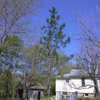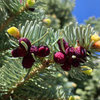Juniperus recurva 'Castlewellan'
treeguy123
7 years ago
last modified: 7 years ago
Featured Answer
Sort by:Oldest
Comments (7)
maackia
7 years agoRelated Professionals
Holly Springs Landscape Architects & Landscape Designers · Fort Lee Landscape Architects & Landscape Designers · Saint Louis Park Landscape Architects & Landscape Designers · Willowick Landscape Architects & Landscape Designers · Brentwood Landscape Contractors · Burlington Landscape Contractors · Surprise Landscape Contractors · Alamo Landscape Contractors · Columbine Landscape Contractors · Edwardsville Landscape Contractors · Las Vegas Landscape Contractors · Mission Viejo Landscape Contractors · Mount Sinai Landscape Contractors · West Coon Rapids Landscape Contractors · Sun Valley Landscape ContractorsEmbothrium
7 years agolast modified: 7 years agodavidrt28 (zone 7)
7 years agolast modified: 7 years agodavidrt28 (zone 7)
7 years agolast modified: 7 years agoEmbothrium
7 years agolast modified: 7 years agoEmbothrium
7 years ago













Embothrium